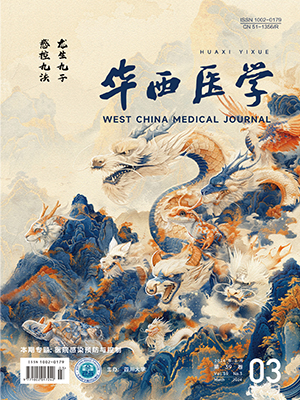| 1. |
Gilbert GL, Kerridge I. Hospital infection control: old problem - evolving challenges. Intern Med J, 2020, 50(1): 105-107.
|
| 2. |
Abban MK, Ayerakwa EA, Mosi L, et al. The burden of hospital acquired infections and antimicrobial resistance. Heliyon, 2023, 9(10): e20561.
|
| 3. |
Hazard D, von Cube M, Kaier K, et al. Predicting potential prevention effects on hospital burden of nosocomial infections: a multistate modeling approach. Value Health, 2021, 24(6): 830-838.
|
| 4. |
Liu X, Spencer A, Long Y, et al. A systematic review and meta-analysis of disease burden of healthcare-associated infections in China: an economic burden perspective from general hospitals. J Hosp Infect, 2022, 123: 1-11.
|
| 5. |
Glowicz JB, Landon E, Sickbert-Bennett EE, et al. SHEA/IDSA/APIC Practice Recommendation: strategies to prevent healthcare-associated infections through hand hygiene: 2022 update. Infect Control Hosp Epidemiol, 2023, 44(3): 355-376.
|
| 6. |
Saran S, Gurjar M, Azim A, et al. Structural risk factors for hospital-acquired infections in intensive care unit. HERD, 2021, 14(2): 328-336.
|
| 7. |
中华人民共和国卫生部. 医院感染诊断标准(试行). 中华医学杂志, 2001, 81(5): 314-320.
|
| 8. |
Tan XYD, Wiseman T, Betihavas V. Risk factors for nosocomial infections and/or sepsis in adult burns patients: an integrative review. Intensive Crit Care Nurs, 2022, 73: 103292.
|
| 9. |
Kollef MH, Torres A, Shorr AF, et al. Nosocomial infection. Crit Care Med, 2021, 49(2): 169-187.
|
| 10. |
Rossi G, Nguyen Y, Lafont E, et al. Large retrospective study analysing predictive factors of primary treatment failure, recurrence and death in pyogenic liver abscesses. Infection, 2022, 50(5): 1205-1215.
|
| 11. |
Yang DN, Zhong LM, Huang FQ. Clinical effect of standardized nursing for lymphoma patients and the influencing factors of nosocomial infection. Medicine (Baltimore), 2023, 102(3): e32624.
|
| 12. |
赖莎, 周忠良, 张小龙, 等. 非计划再住院的界定与控制策略. 卫生经济研究, 2022, 39(7): 41-45.
|
| 13. |
吕林芳, 张汉阳. 2020 年北京市某三甲医院医院感染直接经济损失分析. 中华医院感染学杂志, 2023, 33(6): 933-937.
|
| 14. |
林臻, 祝晓强, 陈致宁, 等. 基于 DRG 管理的肿瘤相关疾病医院感染直接经济负担评价. 中华医院感染学杂志, 2023, 33(9): 1417-1421.
|
| 15. |
Avasarala SK, Muscarella LF, Mehta AC. Sans standardization: effective endoscope reprocessing. Respiration, 2021, 100(12): 1208-1217.
|
| 16. |
Eickhoff A, Jung M. Status quo of infections via endoscopes in 2022. A real problem?. Gastroenterologe, 2022, 17(1): 3-8.
|
| 17. |
Dettori M, Riccardi N, Canetti D, et al. Infections in lung transplanted patients: a review. Pulmonology, 2022.
|
| 18. |
Jang SC, Oh BC, Nam JH, et al. Clinical impact and economic burden of post-transplant infections following heart transplantation: a retrospective nationwide cohort study. J Heart Lung Transplant, 2022, 41(11): 1601-1610.
|
| 19. |
Le Gal S, Toubas D, Totet A, et al. Pneumocystis infection outbreaks in organ transplantation units in france: a nation-wide survey. Clin Infect Dis, 2020, 70(10): 2216-2220.
|
| 20. |
Vinson AJ, Kiberd BA, Tennankore KK. Panic in the pandemic: when should kidney transplant programs close?. Kidney Int Rep, 2021, 6(5): 1232-1241.
|
| 21. |
王美霞, 米宏霏, 高晓东, 等. 某三级综合医院医院感染横断面调查及预测模型构建. 公共卫生与预防医学, 2021, 32(5): 56-60.
|
| 22. |
Schwingshackl A, Meduri GU. Rationale for prolonged glucocorticoid use in pediatric ARDS: what the adults can teach us. Front Pediatr, 2016, 4: 58.
|
| 23. |
Tang Q, Chen Q, Li Y, et al. Association between glucocorticoids and mortality in patients with severe pneumonia: a systematic review and meta-analysis based on randomized controlled trials. Comput Math Methods Med, 2022, 2022: 1191205.
|




